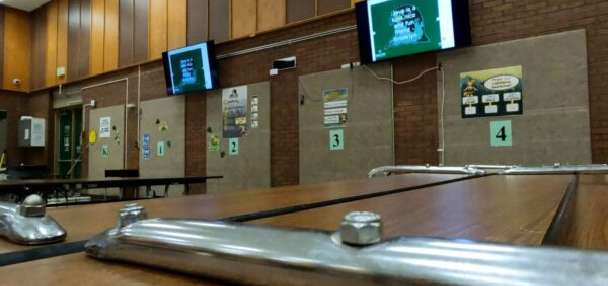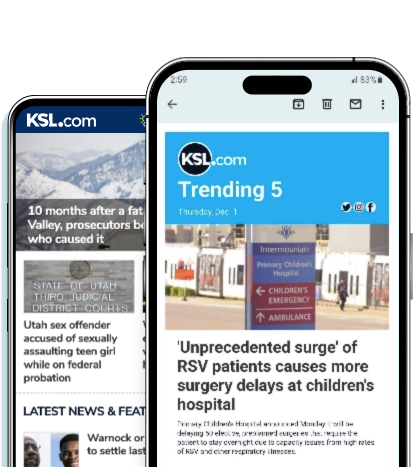Estimated read time: 4-5 minutes
- The University of Utah plans to relocate the Huntsman Center to enhance campus accessibility and create more student housing opportunities.
- The university aims to transform into a "destination" campus with new student housing and facilities.
- President Taylor Randall emphasizes student success and community building in the development plan.
SALT LAKE CITY — The University of Utah is making strides to create "college town magic" and move away from being a commuter campus, with one of those moves coming via a relocation of the historic Jon M. Huntsman Center.
Opened in 1969, the Huntsman Center has played host to some of the greatest moments in Utah basketball, gymnastics and volleyball history, along with serving as a host for a handful of NCAA events — including the 1979 NCAA Basketball Championship "Dream Match-Up" between Indiana State's Larry Bird and Michigan State's Magic Johnson.
But today, the arena is "frankly, not as accessible as it needs to be in this day and time," said Utah athletic director Mark Harlan.
On Tuesday, the U.'s board of trustees approved the "Campus Physical Development Framework" for a future campus that will be able to meet the lofty goals set by U. President Taylor Randall.
"We want to be a top-10 public institution with unsurpassed societal impact. That means, specifically, that we take each one of our students and make sure they have outstanding outcomes, which we will measure by 80% graduation rates and 90% job placement rates," Randall said. "Much of that plan will focus on that student success, particularly as you see the way we build out an infrastructure for students living and thriving on our campus."
The goal of turning the U. from a commuter campus into a "destination" campus certainly isn't new and has long been a goal of Randall's.
In Sept. 2024, the university's trustees voted to authorize the university to enter a public-private partnership with American Campus Communities — the nation's largest developer, owner and manager of high-quality student housing communities — to create 1,450 additional beds of student housing on campus.
It is anticipated the student housing facility, to be built on the corner of Mario Capecchi and South Campus drives, will be completed by the fall of 2026. The project cost of the housing is about $155 million.
The influx of student housing is needed to align with a traditional residential campus, better accommodate Randall's goal to grow the student body to 40,000 and help the U. prepare for the infrastructure needed when Salt Lake City hosts the 2034 Winter Olympic Games.
Additional goals, Randall said Tuesday, are to reach $1 billion in research funding.
"This is the highlight of this new plan and the largest change from what the past plan imagined — a focus on building a community not only for students but also for faculty and staff, where we can engage together and build community in a very different way," Randall said.
While the university has yet to decide where the new arena will be, events will continue at the current Huntsman Center until a new arena is constructed.
This is going to be an ambitious undertaking. We're excited about the future of where this university will go and let's roll up our sleeves and start executing now.
– Taylor Randall, University of Utah president
"This unprecedented project will positively impact future generations of U. students and today's announcement is simply the start of a process that will include an even brighter future for our athletics facilities as a key piece of this plan, including the relocation of the Huntsman Center," Harlan said in a letter. "I want to assure you that the process to identify the ideal location for a new arena will be very thorough, comprehensive and inclusive. We will have the opportunity to explore a completely reimagined in-venue experience to serve our athletics programs and our great fans who support our teams. This process will evolve over several years, and we will work closely with university leadership and campus planners, and seek significant input from fans, donors and the surrounding community."
Harlan noted that the neighboring Jon M. and Karen Huntsman Basketball Facility, along with the recently expanded Dumke Gymnastics Facility, will remain in their current locations.
Beyond the arena having accessibility concerns, with Harlan noting he could go "on and on" about standards that are expected to comply with the Americans with Disabilities Act, a relocation will make it possible to transform that corner of campus and remaining Fort Douglas property into a "college town" centered around housing, food, recreation and wellness venues for up to 14,000 students, Randall said.
New developments for the 24/7 space could include restaurants, a grocery store and retail shops.
The framework for the continued development of the campus has evolved over a 14-month, campus-wide planning process which included engagement of campus stakeholders, outreach to university neighbors and "best-in-class" planning experts, including NBBJ architecture and design firm Aretee Consulting.
"The amount of time and thorough detail that we've gone through over the last months has been amazing," said trustee Bassam Salem. "It was wonderful to be able to dig into every aspect and make sure we understood everything."
If Randall's comments Tuesday were any indication, he wants to move quickly.
"This is going to be an ambitious undertaking ... (that) certainly has to be accomplished relatively quickly, particularly given the growth we're seeing and demand for student opportunities," Randall said. "We're excited about the future of where this university will go and let's roll up our sleeves and start executing now."
More details about the development plan can be found here.











